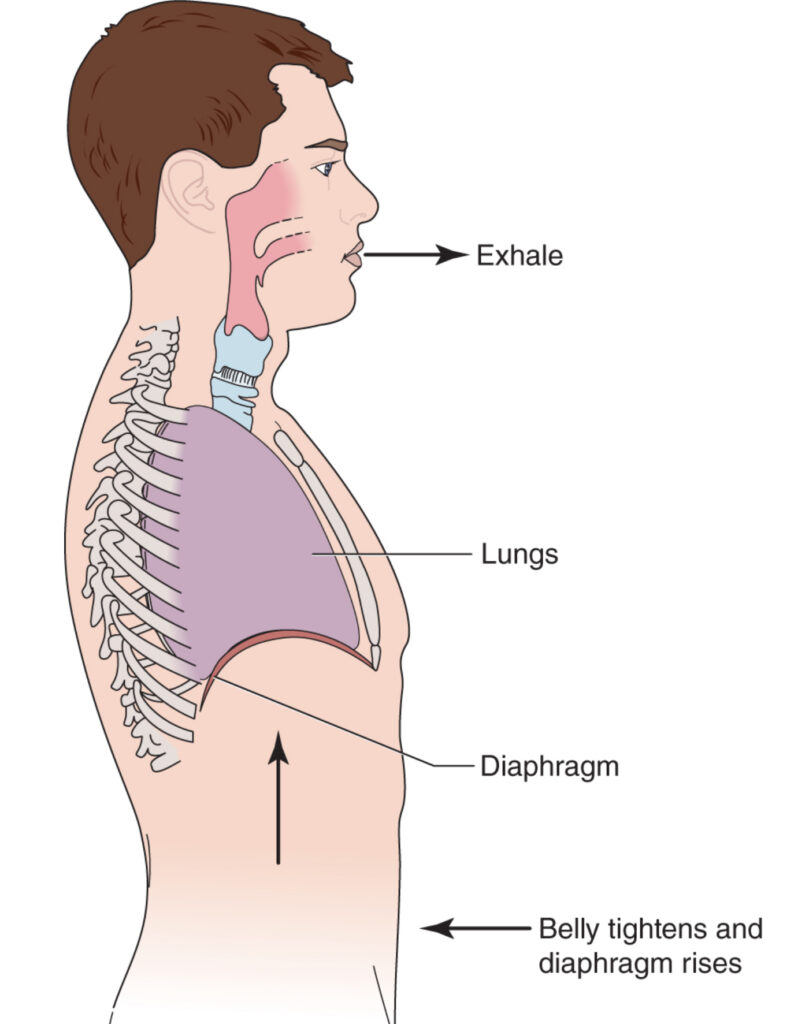It is important to maintain good overall body posture before, during, and after each movement, emphasizing proper spinal posture. Even when performing shoulder exercises only, you must have good alignment of the low back and hips to maintain a stable base from which the shoulder muscles will work.
In general, you should maintain a neutral lumbar and cervical spine; keep the shoulders back and down; slightly contract your abdominal muscles, pulling your bellybutton inward; keep the knees soft, not locked; and keep the wrists in a neutral position. A balanced training posture promotes overall body stability and thus improves activation of your core.
Core stability is associated with proper breathing. It is recommended to exhale on exertion to avoid blood pressure elevations during resistance training. However, specifically performing diaphragmatic breathing can increase intra-abdominal pressure, which provides core stability. Diaphragmatic breathing occurs when the abdomen is expanded rather than the chest; on inhalation, the abdomen should expand outward rather than the chest (see attached). Simply coordinating your diaphragmatic inhalation with the eccentric (relaxation) phase of the exercise will facilitate proper breathing. For example, while performing a bench press, inhale by expanding your abdomen while lowering the weight and exhale from the abdomen as you lift the weight.

